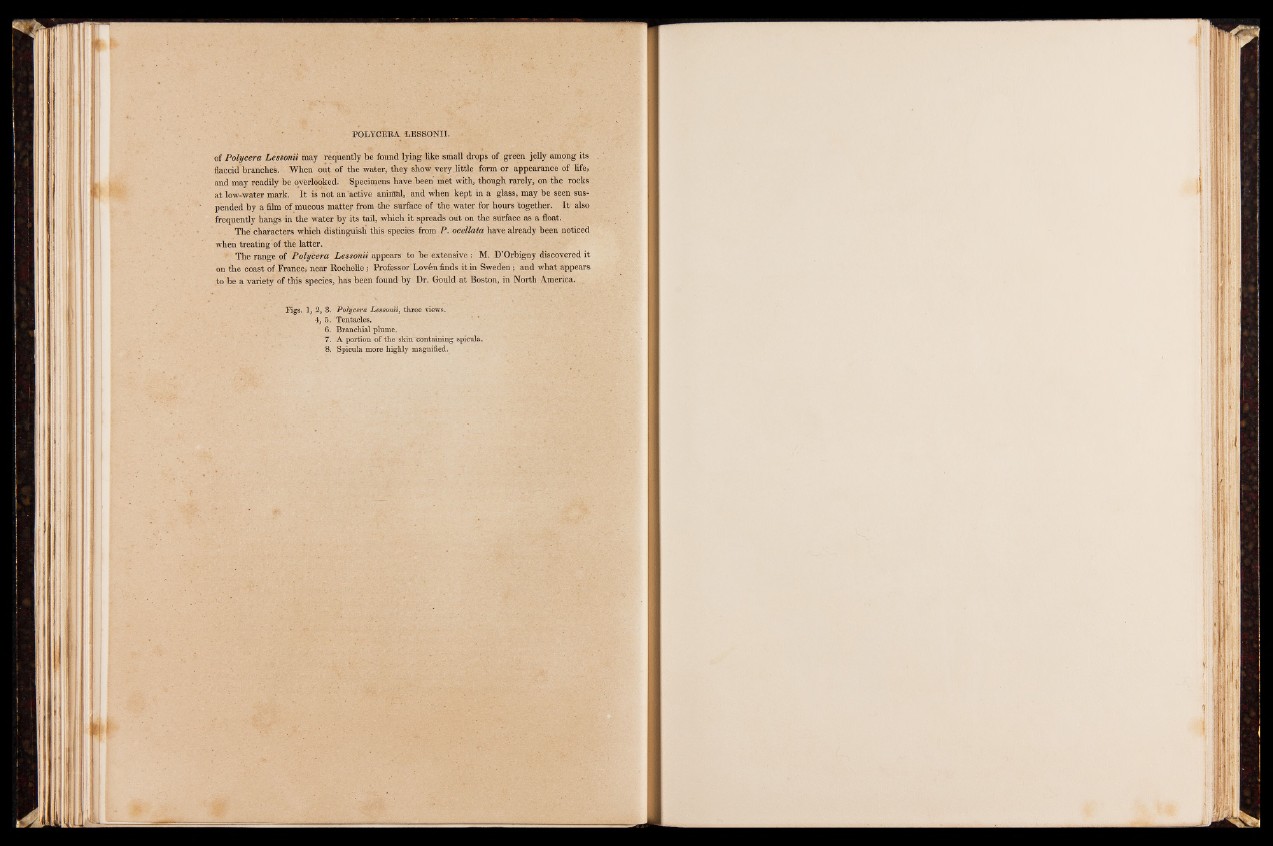
of Polycera Lessonii may requently be found lying like small drops of green jelly among its
flaccid branches. When out of the water, they show very little form or appearance of life,
and may readily be overlooked. Specimens have been met with, though rarely, on the rocks
at low-water mark. It is not an active animal, and when kept in a glass, may be seen suspended
by a film of mucous matter from the surface of the water for hours together. It also
frequently hangs in the water by its tail, which it spreads out on the surface as a float.
The characters which distinguish this species from P. ocellata have already been noticed
when treating of the latter.
‘ The range of Polycera Lessonii appears to be extensive: M. D’Orbigny discovered it
on the coast of France, near Rochelle; Professor Loven finds it in Sweden; and what appears
to be a variety of this species, has been found by Dr. Gould at Boston, in North America.
Figs. 1, 2, 3. Polycera Lessonii, three views.
4, 5. Tentacles.
6. Branchial plume.
7. A portion of the skin containing spicula.
8. Spicula more highly magnified.